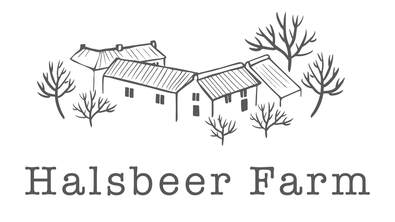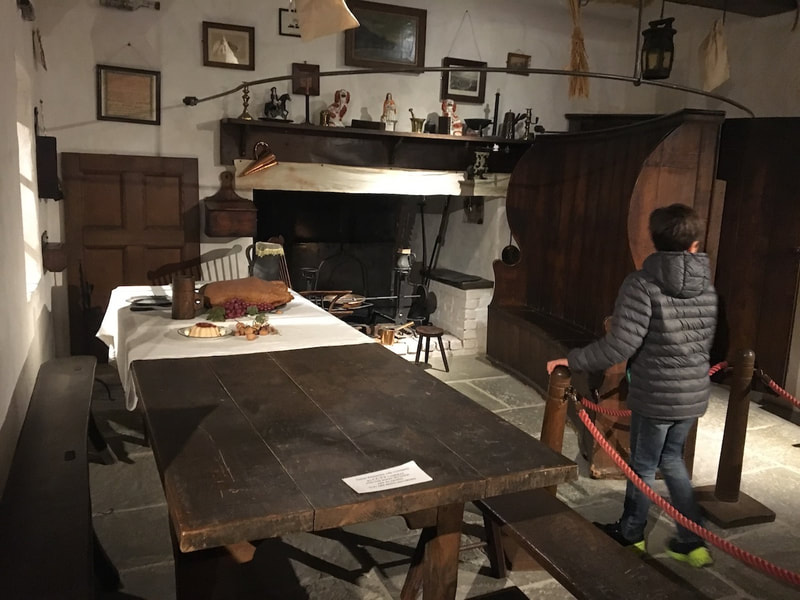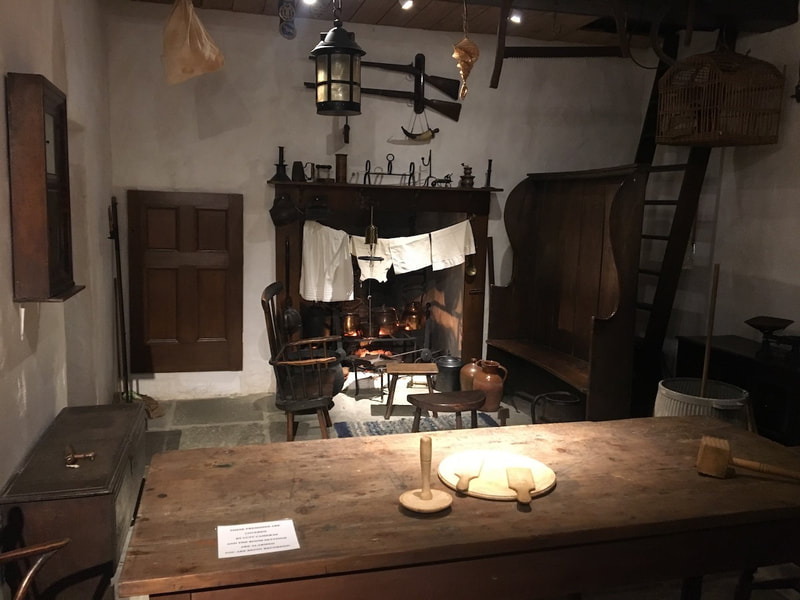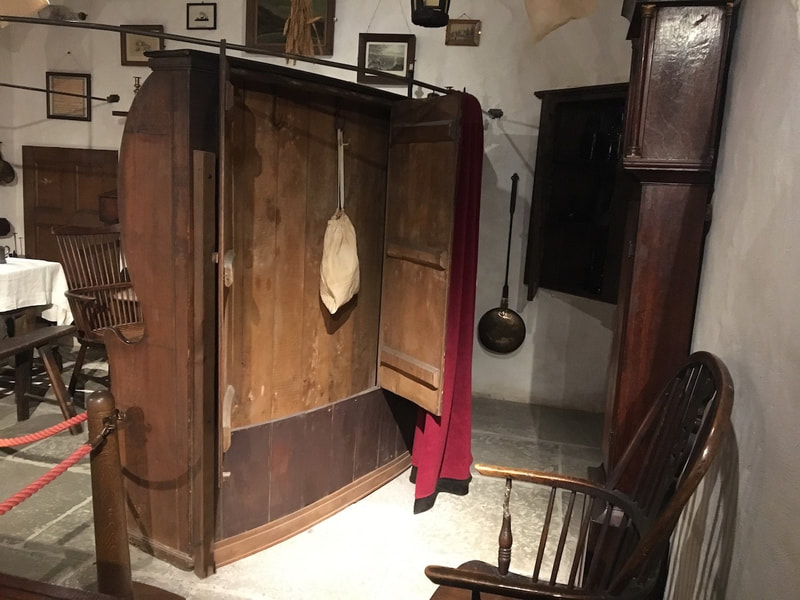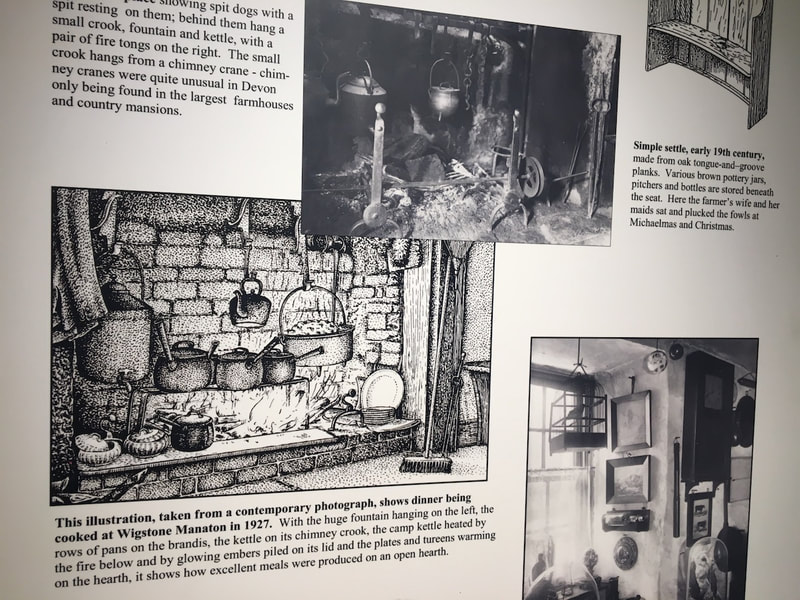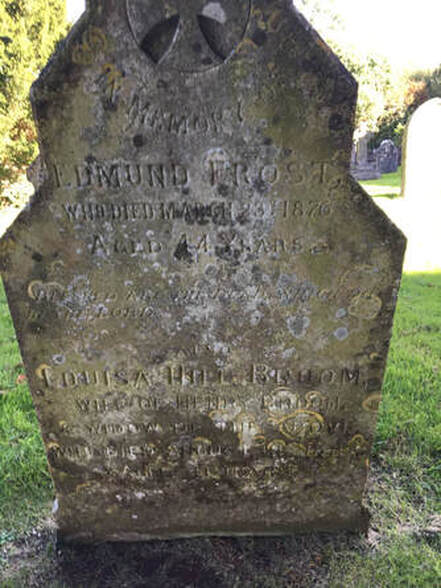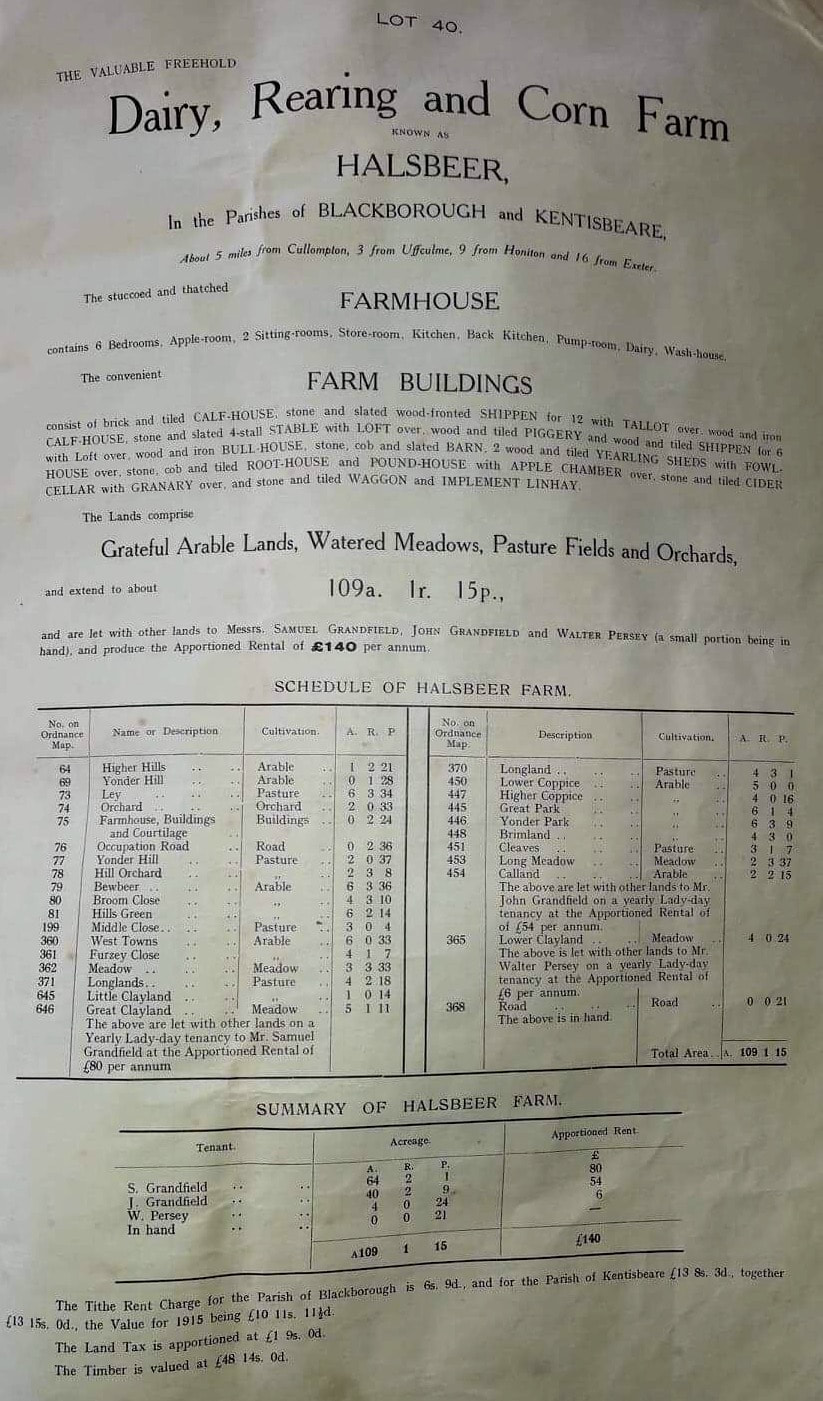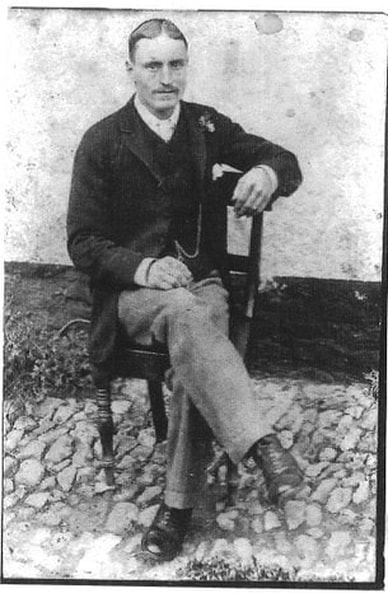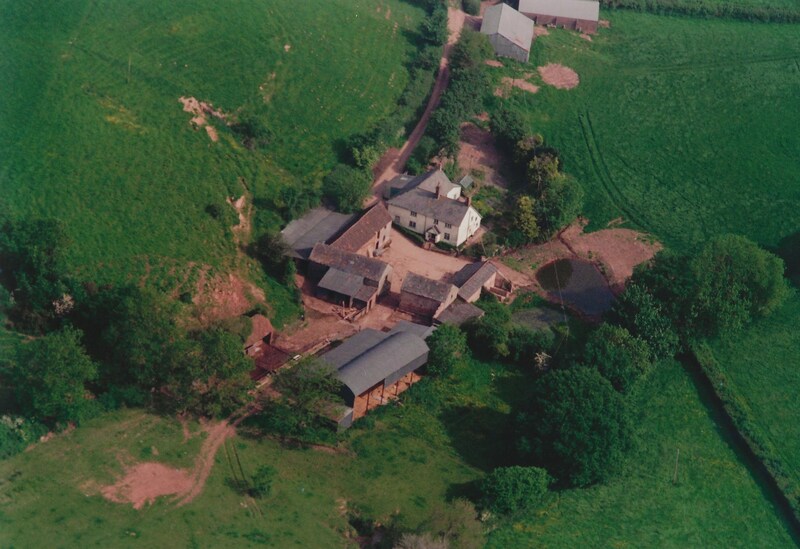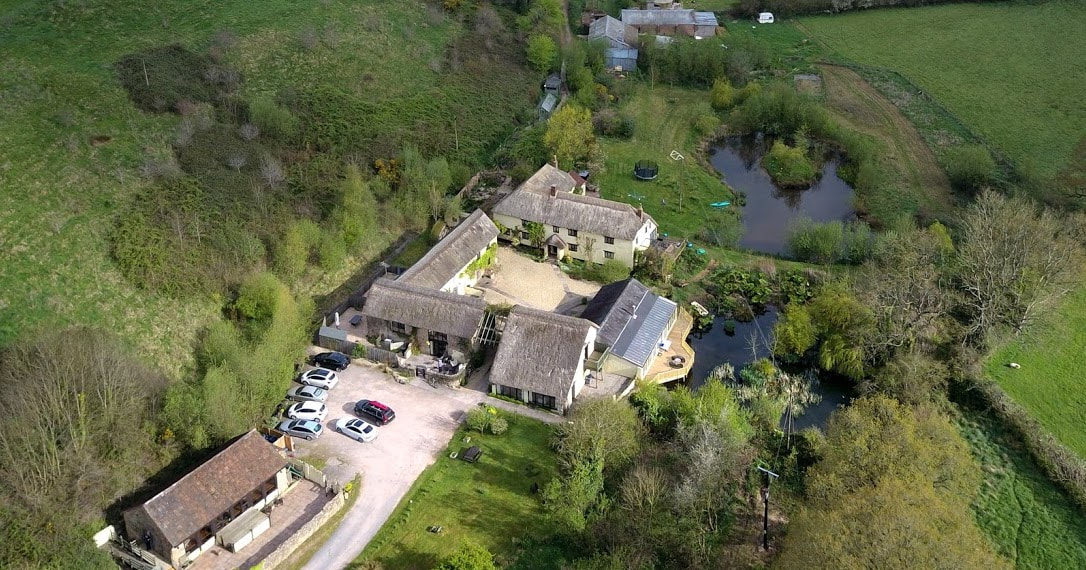The name “Halsbeer” (or Halsbeare as it has previously been spelt) has its origin in the Saxon “Halh” meaning a remote recess, nook or valley and “Beuru”, which is Anglo-Saxon for a wood or grove so Halsbeer literally means “remote wooded valley”. It’s not quite as wooded now but we hope to re-dress that over time by planting new trees. I like to think of Halsbeer as a “hidden” or “secret” valley waiting to be discovered by our guests. I’ve been piecing together its history from various records. I’d love to know more if you or your ancestors have any knowledge or connection to Halsbeer’s past. Here is what I’ve gleaned so far:
Domesday
I have heard tell that Halsbeer was recorded in the Domesday Book but it is difficult to know for sure which Domesday manor it was. (In those days a "manor" was an area of land belonging to a lord rather than a manor house as we would think of it today.) The Reverend Edwin Chalk suggests that Halsbeer may have been the original manor of Blackburrow, apparently evidenced by Rate Books showing a James Cottrel paying taxes for Blackburrow and Elizabeth Stark for what was then called Ballyman’s and is now our nearest neighbour Mortimer’s Farm. However, a more recent interpretation suggests that Mortimer’s and Halsbeer together made up the Domesday Manor of Kentisbeare Prior and that the manor of Blackborough was at what is now Sainthill. As Helen Barrett concludes in her book Our Heritage - A History of Kentisbeare and Blackborough "whether it will ever be possible to identify the manors with certainty one cannot say".
early 17th century
In the early 17th century, which is around when we think the oldest part of the current farmhouse was built, the farm reputedly belonged to a J. Bampfylde, a name that is also associated with the manor of Blackborough. For a fascinating account of the evolution of traditional Devon farmhouses see this account by C. H Laycock from the Devonshire Association’s proceedings. We visited Torquay Museum to see what the farmhouse may have looked like in the 1860s. It houses Laycock’s collection of artefacts and a replica Devon farmhouse. The farmhouse here has a front and back kitchen as shown in the reconstruction, the front is now our snug sitting room and the back kitchen is our kitchen. It still has a little door to the left of what would have been the fireplace to access the bedroom upstairs. We no longer have a settle in the snug but we do still have the fabulous and very big inglenook fireplace and original wood panelling.
The frost family - 1700s -1870s
Halsbeer was for a long time connected with the Frost family. A fascinating account of Frost family history records John Frost and his wife Diana Leddon living here in 1752. John had to travel to London to clear his name after being accused of being complicit in allowing smugglers to hide barrels of brandy in the Halsbeer Farm pond (take a look at my blog for more on this). Another Diana Frost(nee Mortimore – was she a Mortimore from Mortimer’s Farm I wonder?) wrote a ballad recounting the events. Another account of the smuggling incident by the Rev Chalk (1910) states that “The remote farmstead of Halsbeare was the scene of a serious affray between smugglers and Revenue officers”. In 1753, John and Diana had a son, also called John, who married Joan Starke and lived for a while at “France”, presumably what is now nearby France Farm.
Diana also wrote of Christmas at Halsbeare in 1753 which sounded like a rather jolly event with family, friends and workers all invited “to celebrate the burning of the great ashen Christmas faggot”. This is a “Christmas tradition from Devon and Somerset, similar to that of the Yule log… A faggot is a large log or bundle of ash sticks, bound with nine green lengths of ash bands or ‘beams’, preferably all from the same tree”. It was burnt in the hearth on Christmas Eve while the people sang carols. (Source Wikipedia) We are looking forward to re-igniting (excuse the pun) the tradition one Winter.
In 1804 the farm supposedly belonged to a John Turner, I am yet to find out more about him and whether he relates to the Frosts at all. There is a will of a John Turner, yeoman, from Kentisbeare dated 1818. Perhaps this is him.
Parish baptism records show that an Elizabeth Mogford was born at Halsbeare in 1821. She was baptised on 8th April 1821 but sadly died at only one year of age as her burial was recorded on 10th March 1822. Her parents were Joseph Mogford and Dorothy Brooks who married in Kentisbeare in 1820. Joseph’s occupation is given as “husbandman” i.e. a farmer. Also in the parish baptism records, William Radford was baptised on 4th January 1824 and his residence was also given as Halsbeare. His parents were William and Mary Radford. William was a blacksmith. It isn’t known whether the Mogfords and Radfords farmed Halsbeer for themselves or if they were labourers for someone else.
By the time of the 1841 Tithe Apportionment Halsbeer was owned by George Wyndham, the 4th Earl of Egremont, who owned most of Kentisbeare and Blackborough up until 1915 when it was all sold by auction. In 1841 the tenant of Halsbeer was given as James Frost, who also farmed nearby Tinkers (which is no more) and Little Hill (above Tinkers). Halsbeer’s estate in 1841 was more or less the same as now. The 1841 tithe maps show us which fields were arable, meadow and orchard and also give us the field names that were used at the time. The 1841 census shows James (40), his wife Mary (nee Broom, 32) and their children Mary (12), John (11), Edmond (9), Anna (7), James (5), Susannas (3), Elizabeth (1) and Thomas (5 months). Four other people are listed – three males, presumably farm hands, James Cording (20), Henry Winter (19) and James Winter (presumably his brother, age 14) and one female, Ann Carnell, aged 15 who was presumably a maid. The image of the original census is very difficult to read and the transcript, I believe is inaccurate as it gives Mary’s age as 92 which would be quite remarkable in that era when a woman’s life expectancy was just 42, unless she was James’ mother or grandmother. I think the age may read 32.
The 1851 census gives a number rather than name for the house, so I can’t be 100% sure it is for Halsbeer but it seems likely. There is an entry for James Frost (farmer of 70 acres employing three labourers) with Edmund (now aged 19), Anna (18), James (16), Susanna (14, scholar), Elizabeth (11), Thomas (10) and Rebecca (4). It certainly seems to be the same family, just ten years on. In addition James Cording servant aged 30 who was present in 1841 too. This begs the question where was Mary when the census was conducted? She is present in 1841, not in 1851 and back again in 1861 unless it was a different Mary? Or perhaps she was away visiting when the census was conducted? Curious.
By 1861 James Frost had died and his widow Mary was head of the household. Edmund was 29. Also at home were Thomas (20) and Rebecca (14, whose occupation is listed as dairymaid). In addition Sarah Radford (15, servant), John Selick (17, a carter), William Ayers (16, servant) and George Hall (11, servant). Was this the same William Ayers/Ayres who became a respected local figure and later ran the Honest Heart beer house in Kentisbeare?
Edmund Frost was still at home in 1871. He was 39 and was as yet unmarried. His sister, Mary Thring a widow aged 42 kept house for him. Also resident were Philip White, Edmund’s nephew, aged 10, Henry Radford (16) and Albert Baker (15), both farm servants and Jane Crewyse (13), domestic servant. Edmund did eventually marry a woman named Louisa, but sadly he died in 1876 at the age of only 44 and is buried in St Mary’s Churchyard in Kentisbeare along with a great many other Frosts. The Frost family still farms locally at Kingsford Manor.
Diana also wrote of Christmas at Halsbeare in 1753 which sounded like a rather jolly event with family, friends and workers all invited “to celebrate the burning of the great ashen Christmas faggot”. This is a “Christmas tradition from Devon and Somerset, similar to that of the Yule log… A faggot is a large log or bundle of ash sticks, bound with nine green lengths of ash bands or ‘beams’, preferably all from the same tree”. It was burnt in the hearth on Christmas Eve while the people sang carols. (Source Wikipedia) We are looking forward to re-igniting (excuse the pun) the tradition one Winter.
In 1804 the farm supposedly belonged to a John Turner, I am yet to find out more about him and whether he relates to the Frosts at all. There is a will of a John Turner, yeoman, from Kentisbeare dated 1818. Perhaps this is him.
Parish baptism records show that an Elizabeth Mogford was born at Halsbeare in 1821. She was baptised on 8th April 1821 but sadly died at only one year of age as her burial was recorded on 10th March 1822. Her parents were Joseph Mogford and Dorothy Brooks who married in Kentisbeare in 1820. Joseph’s occupation is given as “husbandman” i.e. a farmer. Also in the parish baptism records, William Radford was baptised on 4th January 1824 and his residence was also given as Halsbeare. His parents were William and Mary Radford. William was a blacksmith. It isn’t known whether the Mogfords and Radfords farmed Halsbeer for themselves or if they were labourers for someone else.
By the time of the 1841 Tithe Apportionment Halsbeer was owned by George Wyndham, the 4th Earl of Egremont, who owned most of Kentisbeare and Blackborough up until 1915 when it was all sold by auction. In 1841 the tenant of Halsbeer was given as James Frost, who also farmed nearby Tinkers (which is no more) and Little Hill (above Tinkers). Halsbeer’s estate in 1841 was more or less the same as now. The 1841 tithe maps show us which fields were arable, meadow and orchard and also give us the field names that were used at the time. The 1841 census shows James (40), his wife Mary (nee Broom, 32) and their children Mary (12), John (11), Edmond (9), Anna (7), James (5), Susannas (3), Elizabeth (1) and Thomas (5 months). Four other people are listed – three males, presumably farm hands, James Cording (20), Henry Winter (19) and James Winter (presumably his brother, age 14) and one female, Ann Carnell, aged 15 who was presumably a maid. The image of the original census is very difficult to read and the transcript, I believe is inaccurate as it gives Mary’s age as 92 which would be quite remarkable in that era when a woman’s life expectancy was just 42, unless she was James’ mother or grandmother. I think the age may read 32.
The 1851 census gives a number rather than name for the house, so I can’t be 100% sure it is for Halsbeer but it seems likely. There is an entry for James Frost (farmer of 70 acres employing three labourers) with Edmund (now aged 19), Anna (18), James (16), Susanna (14, scholar), Elizabeth (11), Thomas (10) and Rebecca (4). It certainly seems to be the same family, just ten years on. In addition James Cording servant aged 30 who was present in 1841 too. This begs the question where was Mary when the census was conducted? She is present in 1841, not in 1851 and back again in 1861 unless it was a different Mary? Or perhaps she was away visiting when the census was conducted? Curious.
By 1861 James Frost had died and his widow Mary was head of the household. Edmund was 29. Also at home were Thomas (20) and Rebecca (14, whose occupation is listed as dairymaid). In addition Sarah Radford (15, servant), John Selick (17, a carter), William Ayers (16, servant) and George Hall (11, servant). Was this the same William Ayers/Ayres who became a respected local figure and later ran the Honest Heart beer house in Kentisbeare?
Edmund Frost was still at home in 1871. He was 39 and was as yet unmarried. His sister, Mary Thring a widow aged 42 kept house for him. Also resident were Philip White, Edmund’s nephew, aged 10, Henry Radford (16) and Albert Baker (15), both farm servants and Jane Crewyse (13), domestic servant. Edmund did eventually marry a woman named Louisa, but sadly he died in 1876 at the age of only 44 and is buried in St Mary’s Churchyard in Kentisbeare along with a great many other Frosts. The Frost family still farms locally at Kingsford Manor.
the broom family - late 1800s
Louisa married again and the census of 1881 records her and her husband Henry Broom living at Halsbeer with her son (John Frost, 9) from her first marriage. Also present were Esau Rugg (17), an agricultural servant and Georgina Doble (15), a domestic servant. A Robert Doble was farming at Butsons Farm in Kentisbeare in 1894. I wonder if Esau (and Henry – see next entry) was ancestor to Derrick V. Rugg author of two books on the local area ‘Across Cobble-stones’ and ‘Tales drum Debn’ (both available to browse in the communal conservatory). Derrick is buried in Kentisbeare churchyard.
|
Louisa died in 1886 aged only 41 (the age I am now as I write this – it really hits home how young some people died in the past and how lucky we are now to expect to live twice as long at least). Louisa is also buried in Kentisbeare Churchyard, with her first husband Edmund. On the headstone her name is given as Louisa Hill Broom (her maiden name was Louisa Hill Payne and she and Edmund married in Sheldon in December 1871). By 1891 Henry Broom (now 49) had a new wife, Caroline (50). Also at Halsbeer were Emma Parne (17, domestic servant) and Henry Rugg (13), farm labourer. There is no record of Henry having children with either Louisa or Caroline in the censuses. John Frost may have been living with his uncle and aunt (Thomas and Edith Blackmore) in Broadhembury by then.
|
By 1901 Henry Broom was a widower of 59 and his occupation is given as retired farmer. He was living at Halsbeer with John Crews, also a widower of 78, but whose occupation is given as agricultural labourer! At this time John Grandfield (also 50) was in residence at neighbouring Mortimore’s Farm with his wife Mary A. (50), son Samuel (29) and William Symons (a cattleman on the farm aged 15). John and Mary A. were buried in Blackborough Churchyard.
the grandfield family - 1902-1939
In around 1902 that same Samuel Grandfield moved to Halsbeer and married his cousin Annie. Samuel was master of the house for 37 years until his death in 1939. The 1911 census shows Samuel was then 39 and Annie 32. They had been married for 9 years and had 5 children at that point – John (8), Samuel Owen (6), Phyllis Mary (5), Herbert Richard (4) and Sydney Hugh (1). Also living at Halsbeer were George Potter (aged 20, horseman), Henry John Dunn (17, cattle man), and Alice Maud Northcott (also 17) domestic servant.
Annie died in 1914 shortly after the birth of their sixth child Frederick Henry. Newspaper reports of the funeral describe how “a knell was rung on the church bells, and the blinds of most of the houses in the village were drawn”. She was only 35. (Frederick Henry Grandfield and his wife Patience presumably lived in Kentisbeare or nearby for their whole lives as they were both buried in St Mary’s Churchyard, Frederick in 2000 and Patience in 2006.)
In 1915, Samuel, who until then had been a tenant farmer, bought the freehold of the farm when it was sold at auction (along with the rest of Blackborough and Kentisbeare) by George Wyndham, Earl of Egremont who owned Blackborough House. The 1915 auction particulars are fascinating and give an insight into how the farmstead looked at that time.
Annie died in 1914 shortly after the birth of their sixth child Frederick Henry. Newspaper reports of the funeral describe how “a knell was rung on the church bells, and the blinds of most of the houses in the village were drawn”. She was only 35. (Frederick Henry Grandfield and his wife Patience presumably lived in Kentisbeare or nearby for their whole lives as they were both buried in St Mary’s Churchyard, Frederick in 2000 and Patience in 2006.)
In 1915, Samuel, who until then had been a tenant farmer, bought the freehold of the farm when it was sold at auction (along with the rest of Blackborough and Kentisbeare) by George Wyndham, Earl of Egremont who owned Blackborough House. The 1915 auction particulars are fascinating and give an insight into how the farmstead looked at that time.
|
The auction particulars (at left) are a little difficult to read but highlights include:
“grateful arable fields” (I am yet to know what this means, presumably they were productive and easy to farm?); the house had six bedrooms and an apple room in the space we now have four bedrooms and a bathroom; the farm buildings (now the cottages and communal areas) were tiled rather than thatched and composed various calf houses, shippens (cow-sheds), a tallot (loft or attic), bull house, yearling sheds (for young animals), fowl house (for chickens, ducks and the like), root-house (for storing winter fodder for the cattle presumably), a pound-house (to press or “pound” apples for cider), an apple chamber, and cider cellar with granary over. |
|
One of Samuel’s grand-daughters stayed at Halsbeer and shared a photo (right) of Samuel with me, we think taken outside the farmhouse.
Samuel married Mary Thorne (nee Podbury) in Kentisbeare in 1916. It was a second marriage for them both as her first husband was lost during the early stages of WW1. Samuel and Mary had two daughters, Dorothy and Gladys before Mary died in 1921. Mary had two sons from her first marriage, Henry and Thomas, who were raised by their grandfather Robert Thorne. After Mary’s death Samuel was married again, to Marguerite Bagnall Prout, in 1922. They had four children, two boys Stanley G. (1923) and and Percy W. (Bill? 1926), and twin girls, Gertrude I. and Ivy G. in 1925. |
Samuel died in 1939 and is buried with Annie in the churchyard of St Mary’s Kentisbeare. From newspaper reports it seems he was a person of some import to the village, having sung in the Kentisbeare and Blackborough church choirs for 50 years, having served on the parish council and as a school manager (akin to a governor now presumably) and was secretary of the local Conservative Association for about 25 years.
Later in 1939 a register was conducted at the onset of war, ostensibly to produce identity cards. At that time Marguerite was still at Halsbeer with Frank K. Grandfield (age 39), Samuel O. Grandfield (33) and Edward J. E. Taylor (18), who may have been Marguerite's son by her first husband. Frank wasn’t present in the 1911 census which led me to believe he was a nephew or some other relation rather than his son. A Grandfield relative contacted me and said he thinks Frank K. was Frank Kynaston Grandfield, first cousin to Samuel who was born and brought up in the Berkshire area from 1927 to 1931 and died in Berkshire in 1979. Samuel O. is presumably the Samuel Owen who was 6 in 1911. Interestingly there is a hand written note on the 1939 register entry for Marguerite changing her surname to Radford and suggesting that she remarried in 1945.
Later in 1939 a register was conducted at the onset of war, ostensibly to produce identity cards. At that time Marguerite was still at Halsbeer with Frank K. Grandfield (age 39), Samuel O. Grandfield (33) and Edward J. E. Taylor (18), who may have been Marguerite's son by her first husband. Frank wasn’t present in the 1911 census which led me to believe he was a nephew or some other relation rather than his son. A Grandfield relative contacted me and said he thinks Frank K. was Frank Kynaston Grandfield, first cousin to Samuel who was born and brought up in the Berkshire area from 1927 to 1931 and died in Berkshire in 1979. Samuel O. is presumably the Samuel Owen who was 6 in 1911. Interestingly there is a hand written note on the 1939 register entry for Marguerite changing her surname to Radford and suggesting that she remarried in 1945.
recent history
On the death of Samuel in 1939, Halsbeer was sold to Mr & Mrs Cecil Snell. Mr Snell was the last of the true farmers at Halsbeer. They also owned Highwoods Farm. The property came to market in November 1998 on the death of Mr Snell. Mr and Mrs Thomson extended the house in around 1999/2000. They then sold to Peter and Jasmine Norris in June 2000 who spent the next two years converting the farm buildings into the holiday cottages and also started the yurt business in 2007. We bought the property in 2016.
Halsbeer Farm most likely summer 1998 Halsbeer Farm April 2017
My researches continue into the history of Halsbeer and its former occupants. If you have any information you think may be of interest please let me know. Thanks
selected sources
Chalk, Rev. Edwin S. (1910a) The Town, Village, Manors, Parish and Church of Kentisbeare. Transactions of the Devonshire Association
Chalk, Rev. Edwin S. (1901b) The Manor, Parish and Churches of Blackborough. Transactions of the Devonshire Association
Barrett, Helen (1977) Our Heritage - A History of Kentisbeare and Blackborough
Chalk, Rev. Edwin S. (1901b) The Manor, Parish and Churches of Blackborough. Transactions of the Devonshire Association
Barrett, Helen (1977) Our Heritage - A History of Kentisbeare and Blackborough
|
Halsbeer Farm
Blackborough, Cullompton Devon EX15 2HW [email protected] 01884 266699 What3Words: cheer.instilled.calms |
